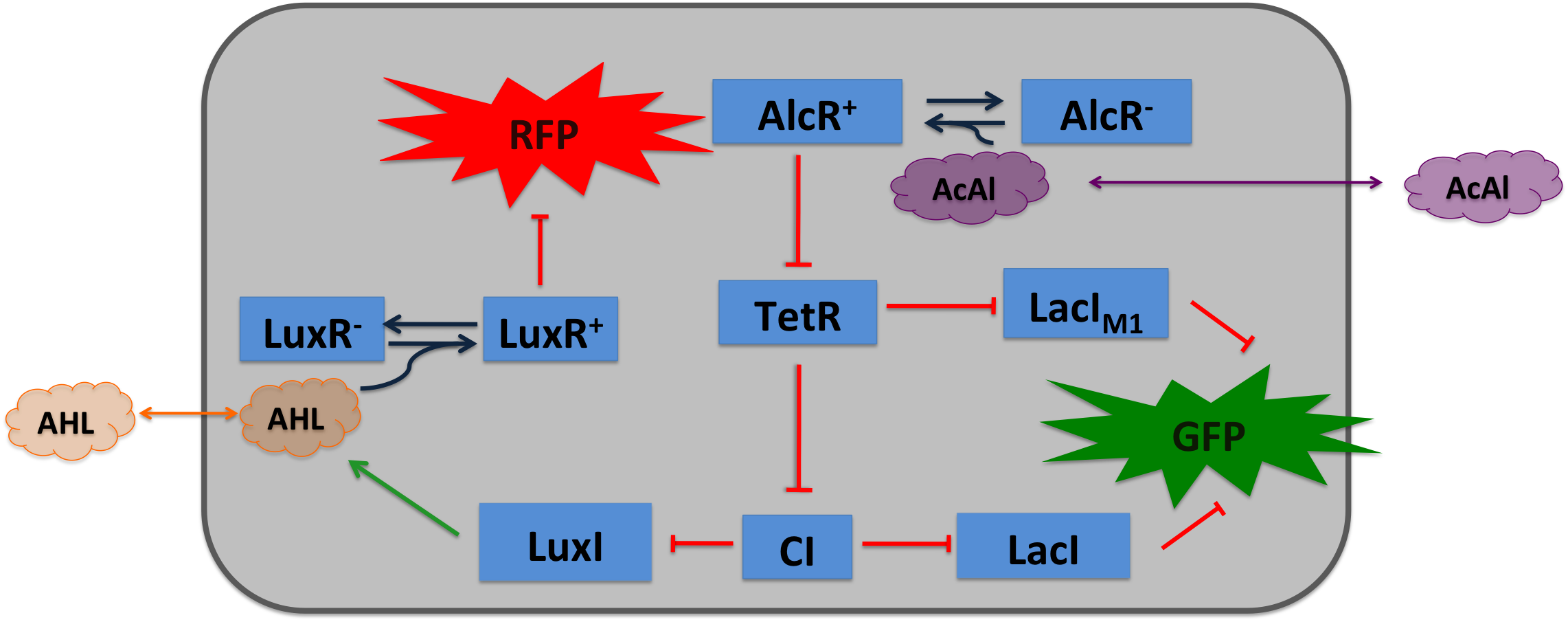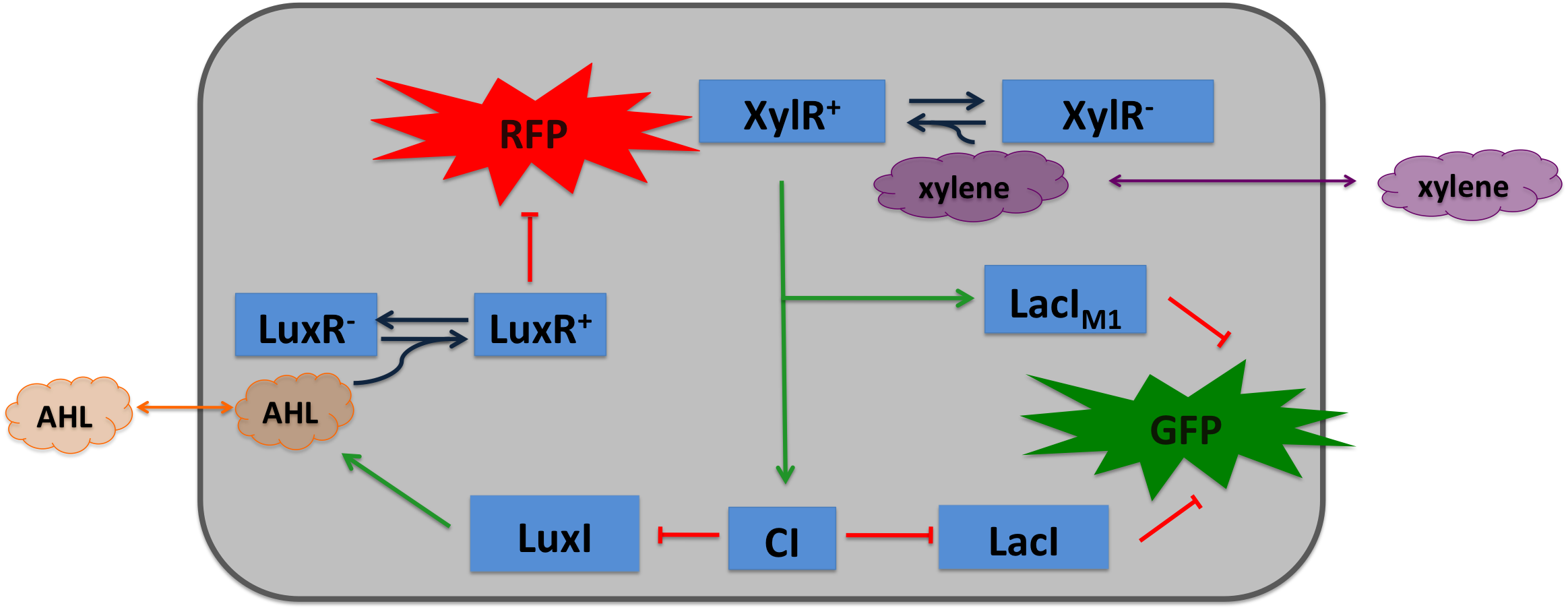Team:ETH Zurich/Overview/CircuitDesign
From 2011.igem.org
| Circuit Design |
| Page description goes here. |
Circuit DesignTo realize the smoke detecting optosensor (see Project Idea), we implemented two distinct network designs: one SmoColi sensing acethaldehyde (see Figure&nsbp;1) and one sensing xylene (see Figure 2). Both designs share the same signal transduction and processing units, and a similar design in the signal detection unit.
Signal DetectionFor Design 1 (Design 2), the small signaling molecule acetaldehyde (xylene) is supplied in the extra-cellular medium. Acetaldehyde (xylene) can diffuse through cellular membranes and dimerizes with its constitutively expressed receptor AlcR (XylR). Upon dimerizing, the AlcR-acetaldehyde (XylR-xylene) complex can bind to its operator, and inhibits (activates) the transcription of the genes under the control of the BLAH (BLUB) promoter. Since for the further signal processing it was necessary to have a POPS signal proportional to the signaling molecule concentration, and since the acetaldehyde sensor inverts the signal due to its transcriptional inhibition, we decided to include an additional unit to invert the transduced signal downstream of acetaldehyde, which is not present for the xylene sensor: we put TetR under the transcriptional control of AlcR, and since TetR acts as a transcriptional inhibitor for downstream proteins, the transduced acetaldehyde signal has a similar qualitative input/output relation as the transduced xylene sensor without inverter. |
 "
"



